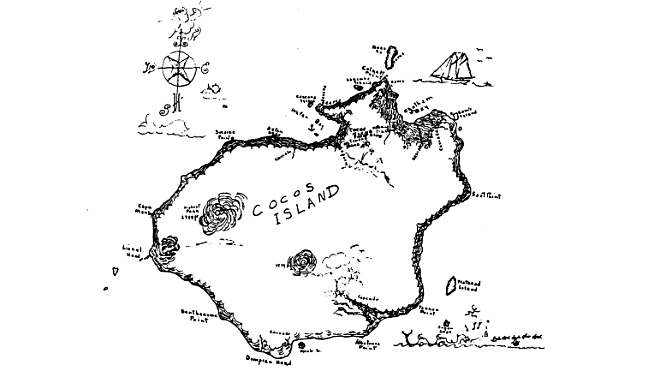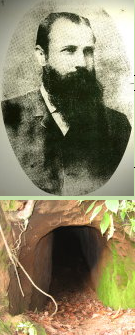Forgotten Kingdoms: August Gissler’s Cocos May 15, 2013
Author: Beach Combing | in : Contemporary, Modern , trackback

When August Gissler (obit 1935) became, at last, governor of Cocos Island, off Costa Rica, in 1897, he was not interested in the tiny and transient population of tobacco growers there, most of whom he had brought over from his home country. The German was obsessed, instead, by the vast quantites of gold (allegedly) buried under the surface of the little island, a piece of Pacific rock which measured a mere nine-square miles. According to pirate history (i.e. the unreliable and self-interested ravings of cut-throats and desperados) four immense fortunes had been buried on Cocos.
1) Inca Treasure: With Spanish atrocities on the mainland a group of Incas retreated to the island and hid their treasures in a complex of caves on Mount Iglesias. There is a particularly bizarre foundation to this story (another post another day), and some claim that the descendants of the Inca guards are still hidden on the island!
2) Davis’ Treasure: Pirate Edward Davis sacked the Pacific Coast of South America in the 1680s. By some accounts he left an immense treasure at a secret place on Cocos Island. When we say immense we are talking about several million. Barely enough to fund a modern expedition.
3) Bonito’s Treasure: from 1818-1820 Benito Bonito ‘of the Bloody Sword’, sacked coastal settlements in Pacific Central America. He too, it is said, buried treasure on Cocos Island including tens of millions of dollars worth of gold taken from a Spanish bullion ship.
4) Lima Treasure: In 1820, the Spanish removed all gold and precious objects from Lima, fearing (rightly as it turned out) a revolt there. Very foolishly the Spanish entrusted it to a British ship (!!!), the Mary Dear, whose Captain, Thompson buried, he later asserted, well over a hundred million dollars worth of treasure (in today’s money) on Cocos. Thompson’s fate was an unusual one (yet another post yet another day)
Beach is not a mathematician but he reckons that these treasures, if as advertised, must weigh a couple of tonnes. How difficult can it be to find them on an island that is four miles long and three miles across at its widest point? If every reader of this blog agreed to buy a metal detector and a one way ticket to Costa Rica we should be able to sort the problem out in an afternoon and then buy Costa Rica on our way home. (Or more realistically a quarter of San José.)
Gissler (pictured below) also thought that things would be easy when he arrived in 1889 on his first visit. He came to stay in 1891 and finally left the island in 1908. In that time he dedicated his life to discovering the hidden treasures of Cocos. He had amassed various clues as to where this or that hoard was secreted. With picks and shovels he went after said treasure. Accounts differ as to how much he actually found: some mention six coins, other mention one coin and a golden glove and some sources claim he found nothing. Let’s be optimistic, one piece of eight for every three years.
The German tobacco growers found it too difficult to make money and went home and Gissler, eventually, followed. As he got on the boat – he would spend the rest of his life in New York, he must have reflected on the thousands of dollars he’d spent, the thousands of pounds of earth he’d shifted, the tunnels (many still to be visited today, see photo) scraped through solid rock and, of course, the years running like sand uselessly through his fingers. He had been 34 when he had come, 40 when made a governor and 52 when he left, surrendering the island to its flora, fauna and its phantom treasures.
Any other examples of such striking futility: drbeachcombing AT yahoo DOT com
It goes without saying that ‘they’ are still at it: report on treasure hunts on Cocos in 2012.



